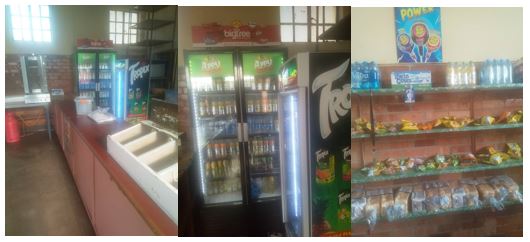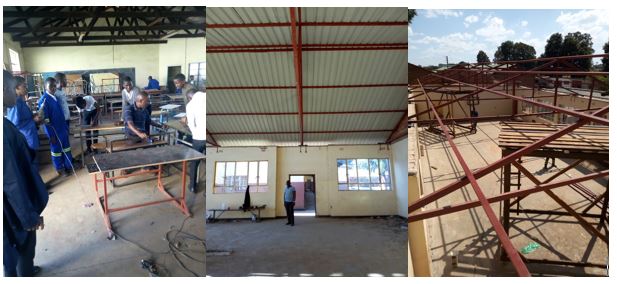- Chicken rearing-broilers
- Layers for egg production
- Vegetable gardening
- Pig rearing
- Fish farming
- Tuck-shop
- Design & Technology activities
The school has for a long time been rearing broilers which have always supplemented the boarding section in terms of feeding the pupils. Before 2020, the school would rear a batch of 500 chickens at least twice in a term. The picture on the ground is now different as the unit is now able to rear the same batch of 500 three times in a term. This has led to a consistent supply of chickens at the boarding hence cutting off the supply from elsewhere.

Day old chicks at the poultry
In April 2019, the school introduced layers for egg production. A storage cage capacity of 480 layers was purchased and put up in which the school managed to purchase a total of 240 layers. Three teachers and one general worker attended training on how to care for the layers. The production of eggs meant that supply from outside sources was automatically cut and enhanced meals at the boarding. An additional 103 layers were bought in January 2020, thus increasing egg production.

The 341 layers which produce an average of 10 trays a day
| Asset | Number |
| Birds | 341 |
| Cages | 2 |
| Drums | 1 |
The school embarked on growing various vegetables such as rape, Chinese cabbage, cabbages and tomatoes in the school garden. The vegetables grown are meant for consumption by pupils in the boarding. The pupils can now feed on green vegetables instead of the usual routine of feeding on cabbage as the traditional vegetable in boarding schools.
Maize is grown during the rainy season; however, consumption is limited to fresh maize due to land capacity.

Part of the tomato harvest and the vegetable garden
In order to expand production unit, the school has since bought three pigs, one male and two females. It is hoped that these will multiply and later grow so the pupils can feed on pork.
The three pigs recently purchased.Two fish ponds have been dug and await fish stocking at the beginning of September 2020.

The two fish ponds. Each can stock 2 500 fingerlings
The school is running a tuck-shop which is accessed by teachers, pupils and the housing units within the school. The tuck-shop stocks a variety of goods which include assorted groceries such as sugar, tissue, soap, lotions, cornflakes; and stationery.

Part of the stock at the tuck-shop
The department of Design and Technology has been rehabilitating old desks as well as assembling new ones to seat pupils in school. They recently worked on the roof of one of the dining halls in boarding which collapsed due to heavy rains in December, 2019.

The Design & Technology Department working on the Grade 11 dining hall roof and assembling desks.
- Increased the number of layers from 245 to 341
- Egg production has increased.
- The school has cut the cost of buying eggs.
- Participating in day to day activities has triggered interest in learners.
- Broilers are being sold on the market
- Pupils feed on green vegetables consistently
- The tuck-shop managed to bring Trade Kings company on board and they supply dairy products and assorted drinks where the school gets commission.
- Trade Kings has given the tuck-shop two commercial coolers for the storage of the dairy products and drinks.
- Need for land to grow the farming of vegetables and poultry
- Lack of funds to purchase the sought land
- Lack of funds to expand the chicken run
- The tuck-shop is unable to increase prices of goods as the target market is mainly pupils, thus, low profit margin.
- To increase the number of layers to 1000 to increase egg production.
- To expand the chicken run to accommodate more birds.
- To buy more cages.
- To start producing our own feed for both the layers and broilers.
- To diversify into producing chicks for sale.
- To purchase farmland to enable the intended expansion
- The tuck-shop plans to stock goods like mealie meal, cooking oil and others to sell to teachers on credit basis